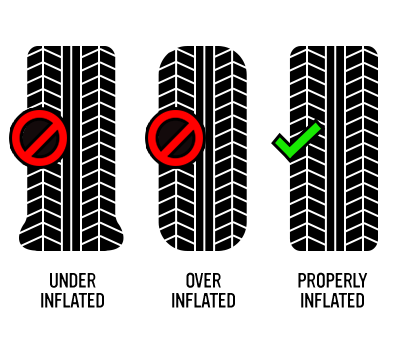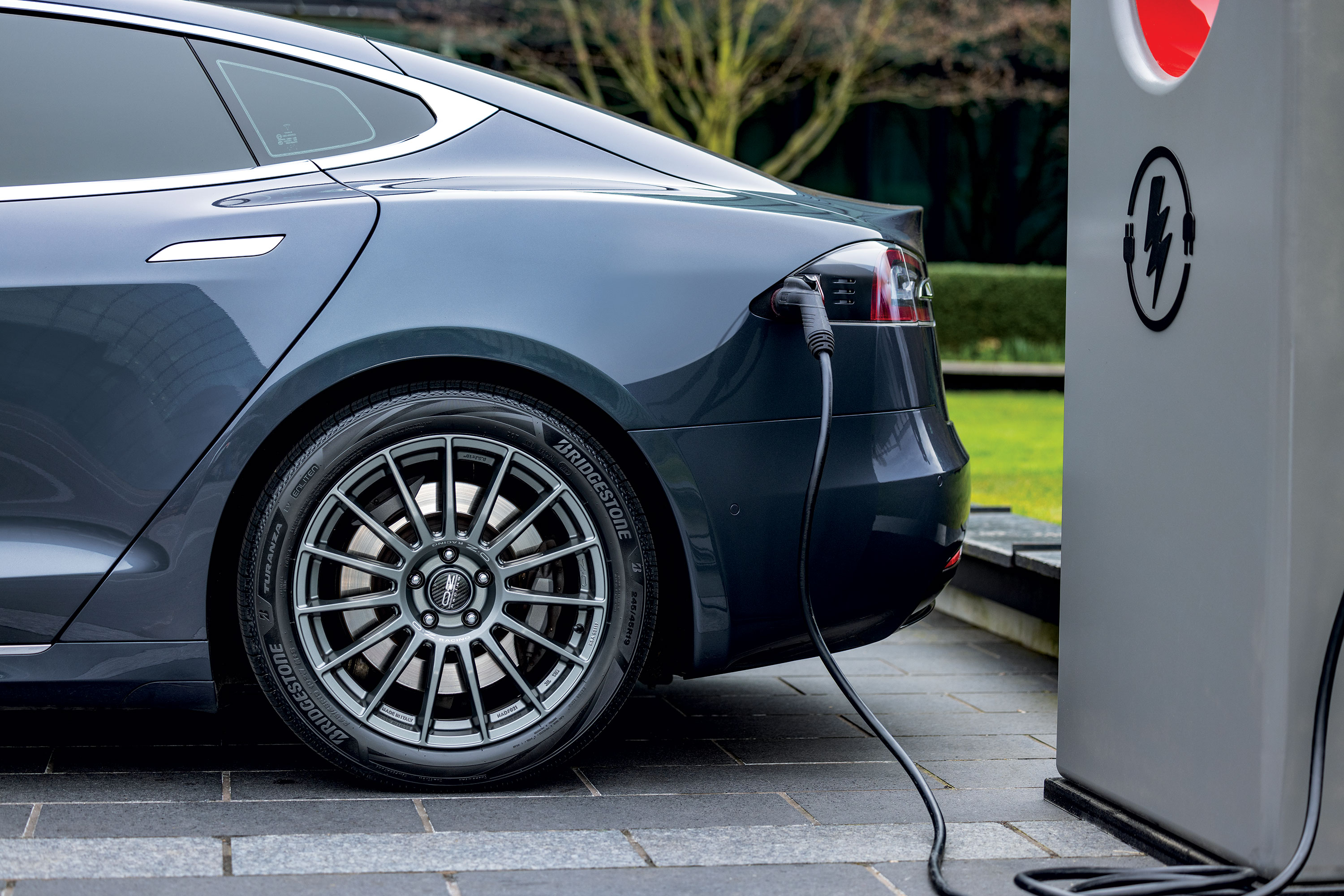For many drivers, summer’s warm temperatures are an open invitation to venture down dusty roads, up winding trails, and across the great American highway system. Rising temperatures mean fun road trips with friends and family, but they also mean changes in your vehicle's tire pressure. Watch out for the dangers of over- or underinflated tires and gear up for a safer road trip season with Firestone Complete Auto Care by your side. With your new tire know-how, you may even be able to increase your car's fuel efficiency!
Tire pressure & temperature? They rise together.
Here's how heat impacts your tire pressure:
In general, tires lose or gain 1 PSI (pound per square inch) for every 10℉ change in temperature. Theoretically, your tires could gain 2 PSI over the course of the day if the temperature rises 20℉—a real possibility in many parts of the country.
Just look at average temperatures in Texas! In May, the average high sits around 80℉, with an average low in the 60s, reports Weather.com. Things cool off as you move a little north and west, with average highs in the 70s and lows in the 50s from North Carolina to Kansas.
From the hills of Virginia to the plains of Oklahoma, your vehicle is likely to encounter natural forces that will cause your tire pressure to go up and down throughout the day. So, why does it matter?
Too Much, Too Little, Just Right
Let's talk about the ups and downs of tire pressure.
Proper tire inflation can lead to improved fuel economy, increased handling and safety, more responsive braking, and a smoother ride—all things that make for a great summer road trip. While tires are designed to handle some fluctuation in temperature and PSI, they perform best when they start at the vehicle's recommended tire pressure. Just like eating a healthy, well-balanced breakfast sets your body up for success, inflating your tires to the recommended pressure sets your vehicle up for success!

When a tire is underinflated, more of its surface area comes in contact with the road. This can cause your car to feel sluggish and slow to respond, and may decrease your fuel economy.
“Under-inflated tires can lower gas mileage by about 0.2% for every 1 PSI drop in the average pressure of all tires,” reports the U.S. Department of Energy.
Underinflated tires can prove costly from a fuel perspective, but also when it comes to buying tires. Underinflation can decrease the lifespan of your tires and make them more vulnerable to damage—all leading to you having to buy more tires, more often.
When a tire is overinflated, less of the tire's surface area comes into contact with the road. The tire will wear prematurely, possibly unevenly, and cause the car to handle and brake poorly, write the car gurus at CarTalk. The tire can also become rigid and inflexible, making it more prone to damage from potholes and other road debris.
![]()
Pro-Tip: Don't count on your electronic tire pressure monitoring system (TPMS) to light up if you have an overinflated tire. The warning light will only come on if a tire's pressure is too low, not too high.
For safer summer drives, check tire pressure!
Check and adjust your tire pressure before heading out.
When it comes to your vehicle's recommended tire pressure, there's no reason to guesstimate. Use our handy online tire pressure tool to find it in just a few clicks!
With this number in mind, grab your tire pressure gauge, get down to business, and check your tires. If your recommended pressure is 35 PSI, that means 35 PSI before you start driving, notes CarTalk. To get the most accurate reading, check your tire pressure in the morning before hitting the road for the day, and adjust your tires based on that reading. Note that in the summertime, your reading may be impacted if the vehicle has been sitting in direct sunlight for a while or parked on hot pavement.
Pressed for time? Let your technician take a look.
When life gets busy, head to your nearest Firestone Complete Auto for a fast, free vehicle inspection and tire pressure check. Our knowledgeable technicians will check the health of your current tires, inflate them to the recommended PSI, and guide you in buying new tires if yours show an unsafe degree of wear. Schedule an appointment online or stop by today. Our experienced tire technicians are here to set you up for a safe summer driving season!



